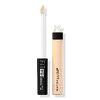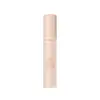What's inside
What's inside
 Key Ingredients
Key Ingredients

No key ingredients
 Benefits
Benefits

 Concerns
Concerns

 Ingredients Side-by-side
Ingredients Side-by-side

Water
Skin ConditioningCyclopentasiloxane
EmollientHydrogenated Polyisobutene
EmollientGlycerin
HumectantSorbitan Isostearate
EmulsifyingPropylene Glycol
HumectantTitanium Dioxide
Cosmetic ColorantOzokerite
Emulsion StabilisingPhenoxyethanol
PreservativeMagnesium Sulfate
Disteardimonium Hectorite
StabilisingDisodium Stearoyl Glutamate
CleansingMethylparaben
PreservativeAcrylates Crosspolymer
AbsorbentAlumina
AbrasiveButylparaben
MaskingAluminum Hydroxide
EmollientTocopherol
AntioxidantSilica
AbrasiveChamomilla Recutita Extract
Skin ConditioningCI 77891
Cosmetic ColorantIron Oxides
Mica
Cosmetic ColorantWater, Cyclopentasiloxane, Hydrogenated Polyisobutene, Glycerin, Sorbitan Isostearate, Propylene Glycol, Titanium Dioxide, Ozokerite, Phenoxyethanol, Magnesium Sulfate, Disteardimonium Hectorite, Disodium Stearoyl Glutamate, Methylparaben, Acrylates Crosspolymer, Alumina, Butylparaben, Aluminum Hydroxide, Tocopherol, Silica, Chamomilla Recutita Extract, CI 77891, Iron Oxides, Mica
Water
Skin ConditioningCI 77891
Cosmetic ColorantDimethicone
EmollientHydrogenated Polyisobutene
EmollientButylene Glycol
HumectantIsododecane
EmollientLauryl PEG-10 Tris(Trimethylsiloxy)Silylethyl Dimethicone
EmulsifyingTrimethylsiloxysilicate
EmollientAcrylates/Polytrimethylsiloxymethacrylate Copolymer
Skin ConditioningVp/Va Copolymer
PEG-10 Dimethicone
Skin ConditioningPentylene Glycol
Skin ConditioningCI 77492
Cosmetic ColorantSorbitan Isostearate
EmulsifyingDisteardimonium Hectorite
StabilisingSodium Chloride
MaskingDimethicone/Vinyl Dimethicone Crosspolymer
Skin ConditioningCI 77491
Cosmetic ColorantTriethoxycaprylylsilane
Phenoxyethanol
PreservativeAluminum Hydroxide
EmollientCI 77499
Cosmetic ColorantCaprylyl Glycol
EmollientPEG-10
HumectantEthylhexylglycerin
Skin ConditioningParfum
MaskingLinalool
PerfumingGeraniol
PerfumingWater, CI 77891, Dimethicone, Hydrogenated Polyisobutene, Butylene Glycol, Isododecane, Lauryl PEG-10 Tris(Trimethylsiloxy)Silylethyl Dimethicone, Trimethylsiloxysilicate, Acrylates/Polytrimethylsiloxymethacrylate Copolymer, Vp/Va Copolymer, PEG-10 Dimethicone, Pentylene Glycol, CI 77492, Sorbitan Isostearate, Disteardimonium Hectorite, Sodium Chloride, Dimethicone/Vinyl Dimethicone Crosspolymer, CI 77491, Triethoxycaprylylsilane, Phenoxyethanol, Aluminum Hydroxide, CI 77499, Caprylyl Glycol, PEG-10, Ethylhexylglycerin, Parfum, Linalool, Geraniol
 Reviews
Reviews

Ingredients Explained
These ingredients are found in both products.
Ingredients higher up in an ingredient list are typically present in a larger amount.
Aluminum Hydroxide is a form of aluminum. It can be naturally found in nature as the mineral gibbsite. In cosmetics, Aluminum Hydroxide is used as a colorant, pH adjuster, and absorbent.
As a colorant, Aluminum Hydroxide may add opacity, or reduce the transparency. Aluminum hydroxide is contains both basic and acidic properties.
According to manufacturers, this ingredient is an emollient and humectant. This means it helps hydrate the skin.
In medicine, this ingredient is used to help relieve heartburn and help heal ulcers.
There is currently no credible scientific evidence linking aluminum hydroxide in cosmetics to increased cancer risk.
Major health organizations allow the use of aluminum hydroxide in personal care products and have not flagged it as a carcinogenic risk at typical usage levels.
Learn more about Aluminum HydroxideCi 77891 is a white pigment from Titanium dioxide. It is naturally found in minerals such as rutile and ilmenite.
It's main function is to add a white color to cosmetics. It can also be mixed with other colors to create different shades.
Ci 77891 is commonly found in sunscreens due to its ability to block UV rays.
Learn more about CI 77891Disteardimonium Hectorite comes from the clay mineral named hectorite. It is used to add thickness to a product.
It can also help stabilize a product by helping to disperse other ingredients.
Hectorite is a rare, white clay mineral.
Learn more about Disteardimonium HectoriteHydrogenated Polyisobutene is a synthetic polymer. Polymers are compounds with high molecular weight. Hydrogenated Polyisobutene is an emollient and texture enhancer.
In one study, Hydrogenated Polyisobutene showed better skin hydration levels than Caprylic/Capric Triglyceride. As an emollient, it helps keep your skin soft and hydrated by trapping moisture in.
Hydrogenated Polyisobutene is often used as a mineral oil replacement.
Learn more about Hydrogenated PolyisobutenePhenoxyethanol is a preservative that has germicide, antimicrobial, and aromatic properties. Studies show that phenoxyethanol can prevent microbial growth. By itself, it has a scent that is similar to that of a rose.
It's often used in formulations along with Caprylyl Glycol to preserve the shelf life of products.
Sorbitan Isostearate is an emulsifer and cleaning agent. It is created from isostearic acid and sorbitol.
As an emulsifier, Sorbitan Isostearate prevents oils and water from separating.
Due to its isostearic acid base, it may not be safe for Malassezia or fungal acne.
Learn more about Sorbitan IsostearateWater. It's the most common cosmetic ingredient of all. You'll usually see it at the top of ingredient lists, meaning that it makes up the largest part of the product.
So why is it so popular? Water most often acts as a solvent - this means that it helps dissolve other ingredients into the formulation.
You'll also recognize water as that liquid we all need to stay alive. If you see this, drink a glass of water. Stay hydrated!
Learn more about Water